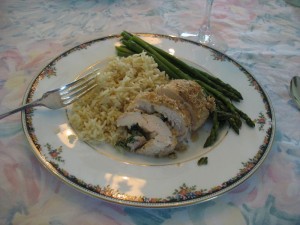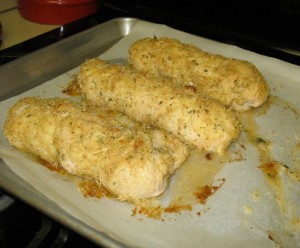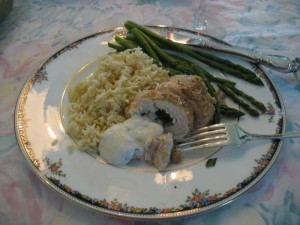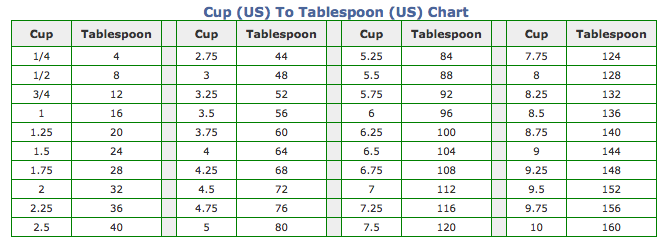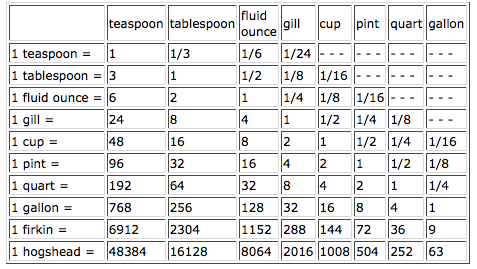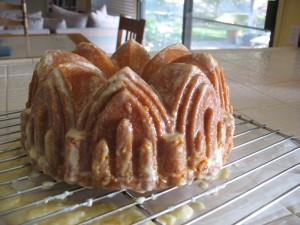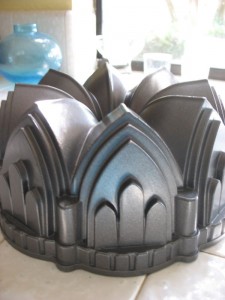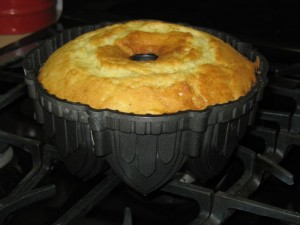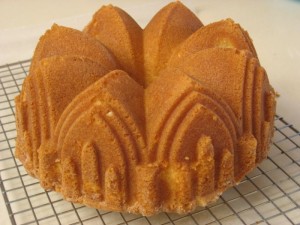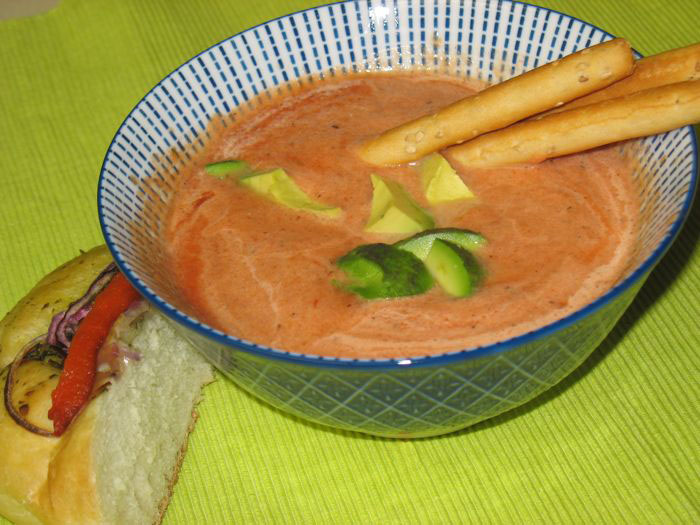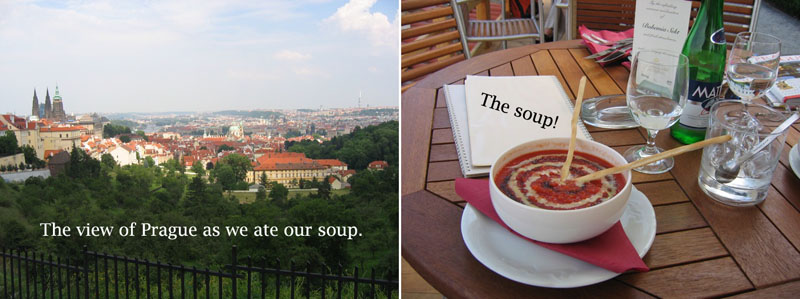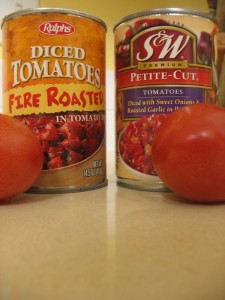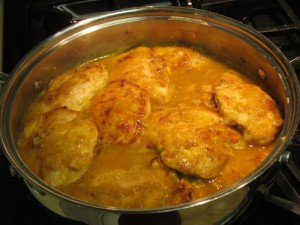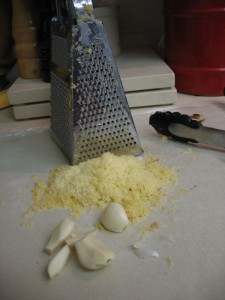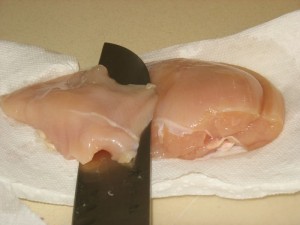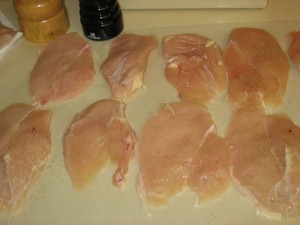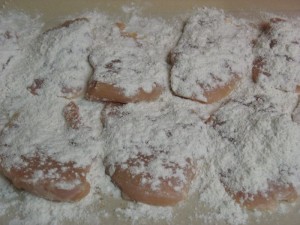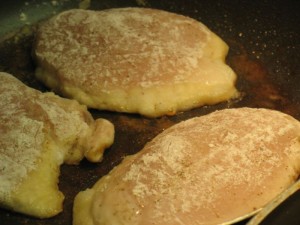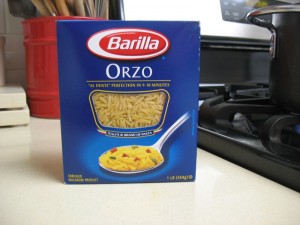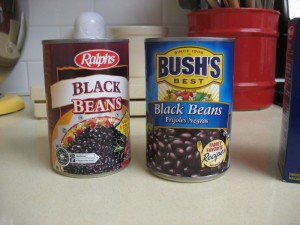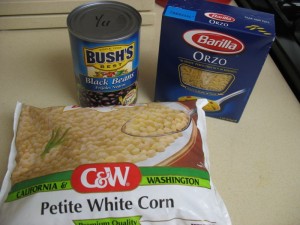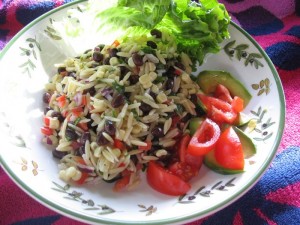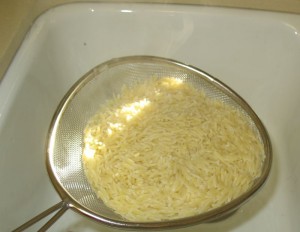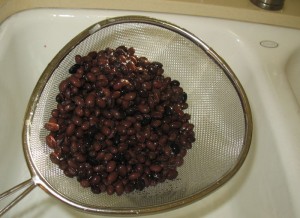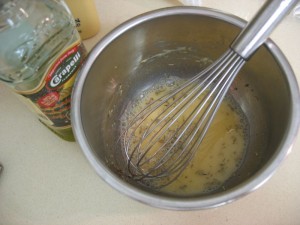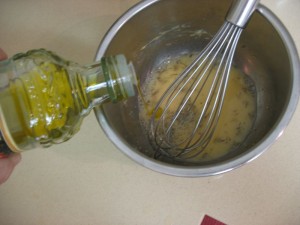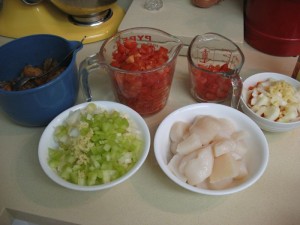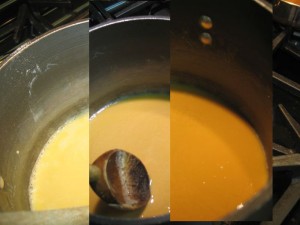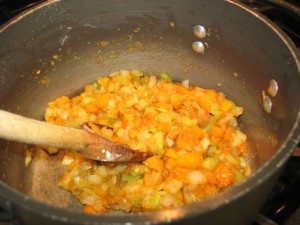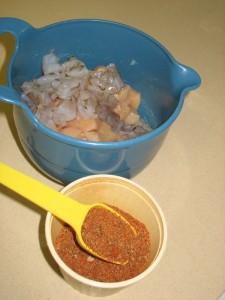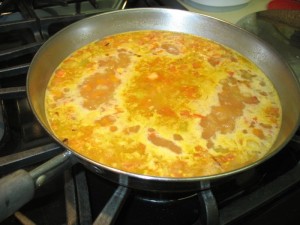Basic directions for the Quinoa Salad for the Women’s Conference.
While I show the prep work for ONE batch of salad, please keep in mind that yours will be tripled, using the recipe amounts found below.
Thanks in advance for helping us out with the luncheon!
Shopping Preamble & Some Tips:
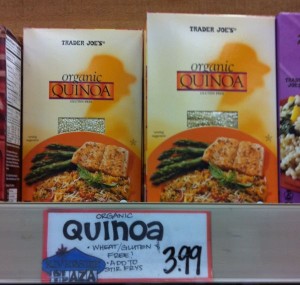
TIP #1: Quinoa (pronounced “keen-wa”) is a grain that is full of protein and is fairly mild. You can buy it in boxes at Trader Joe’s (you’ll need 1 and 1/2 pounds or three cups–check the box for weight; photo is above).

You can also buy it by the pound at Sprouts, up in the Mission Grove area. Again, buy about a pound and half by the store’s scales; this gave me about 3 cups. DON’T buy the red quinoa–we want the beige color quinoa.

Trader Joe’s also has shelled edamame, but so does Sprouts (in the back by the produce in the flat freezer cases).
SHELLED Edamame looks like smooth little lima beans. The one above is Trader Joe’s.
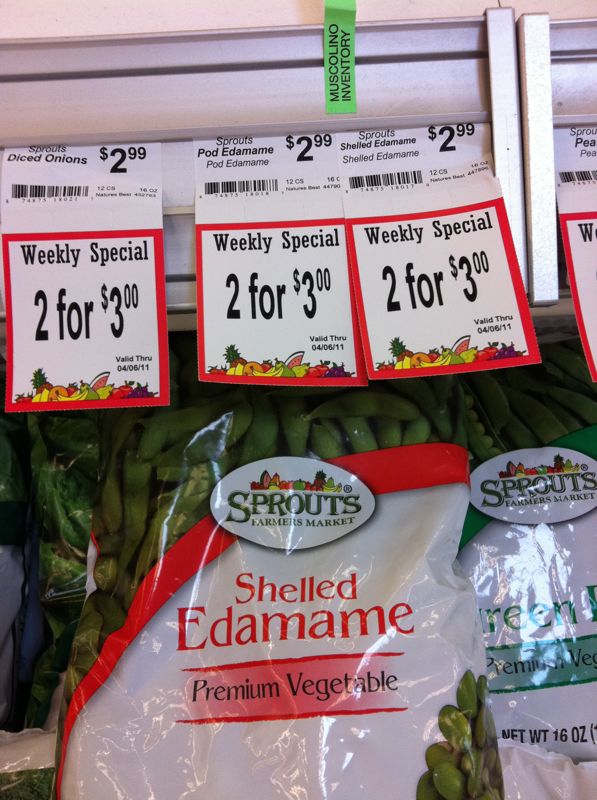
This is how the bag from Sprouts looks. Again, get the shelled edamame.
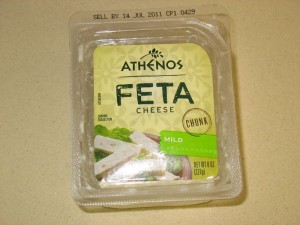
Please buy MILD Feta cheese in a block and crumble it yourself (see salad directions). I bought this at Ralph’s–while they have it many places, I couldn’t always find the mild, as many times the feta is flavored. Don’t buy the flavored Feta. [Note: if you are desparate, and can’t get to Ralph’s, it is okay if you buy it pre-crumbled–you’ll need a 6 to 8 ounce package.]
TIP #2: When mincing the jalapeno, get rid of all the seeds and the membrane and then wash your hands thoroughly. Those two parts are the “spicy-hot” parts of the jalapeno. When I say finely minced, I mean teensy. We don’t want any observable chunks of jalapeno in the salad. It’s just for flavor.
TIP #3: Please use good quality olive oil. Not that light stuff (which is blended with another vegetable oil) or any other cooking oil. Just olive oil. If you don’t have any, come see me. I’ve got vats (I buy if from Costco in bulk).
If you wish to be reimbursed for your expenses, please save all your receipts–I’ll reimburse you that day, after the luncheon is over. However, we would appreciate it if you could donate your salad.
Please drop it off at the kitchen before going into the conference, and cross your name off the list, so we’ll know whose salad has arrived. Thank you in advance for your willingness to help us out–with your contribution, this luncheon will be a big success (and delicious!).
Now to the recipe.
Recipe for Women’s Conference (The Recipe is Tripled)
SALAD:
3 cups dry quinoa
5 cups water
1 and 1/2 16 ounce bags of frozen WHITE frozen corn
1 large red onion (or about 3/4 cup), cut in small dice (about 1/4″ pieces or smaller)
3 red bell peppers, cut in small dice
1 and 1/2 cups cup thinly sliced celery, from the tender inner stalks (about 6)
12 to 15 radishes, sliced
1 and 1/2 cups fresh or thawed frozen edamame
6-8 ounces feta, crumbled. I buy the bricks of it at Ralph’s, then crumble it.
1 and 1/2 jalapeño chile, seeds and membranes removed, minced finely
1 cup chopped cilantro
DRESSING:
1/2 cup fresh lime juice (about 3 limes, depending on size) (I have plenty of limes that were given to me. Holler if you want then.)
3 garlic cloves, finely minced or pureed
1 cup extra virgin olive oil
Salt to taste
For Salad:
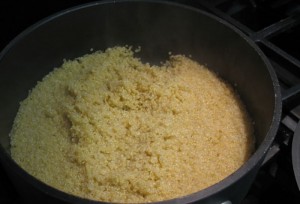
Bring the water to a boil, add quinoa and cook for about 12 minutes, or until the water is absorbed and you see the white cuticle of the grain. Set aside.
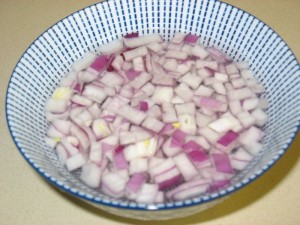
Soak the onion in cold water to cover for five minutes. Drain, rinse and drain again on paper towels.
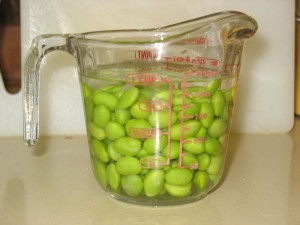
Place the edamame in hot, but not boiling, water for about 5 minutes to thaw.
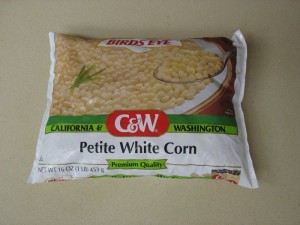
Measure out the corn and add it to a very large mixing bowl. The corn will thaw very quickly. If yours has been kicking around in the freezer for a hundred years, perhaps you’ll want to run it under some hot water to refresh it. Drain well.

Seed and devein the jalapenos, then mince finely. I cut the jalapeno into slices, then turn the cutting board 90 degrees, then chop again. I then go at it again, chopping the bits like I do nuts, over and over.
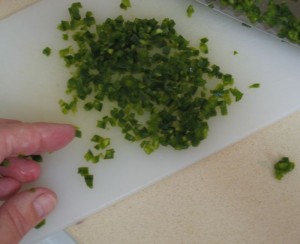
My hand is there for a guide to how small it is. If you are an experienced cook, I apologize for boring you, but I wanted to be clear on the directions. Place into bowl.
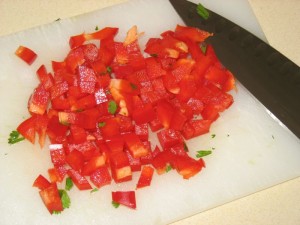
Chop the red bell pepper into fine dice (1/4 inch). Place into bowl.
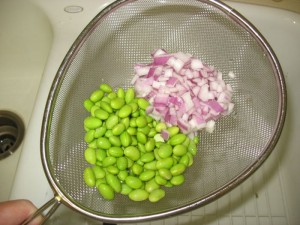
Drain the onion and the edamame, then place on paper towels to drain again, then place into bowl.

Cilantro is stored upright in the refrigerator in an glass of water, with a plastic produce bag over it to keep it fresh. When you need some, just whack it off above the twisty-tie; a thumbs-width-worth is about 1/3 cup chopped, more or less. For a cup, you may need about 1/2 bunch. To measure, layer the leaves in the cup loosely–don’t pack!! Or use the guide of three thumbs-width bunches. Remove any gangly stems before chopping. Add the cilantro to the bowl.
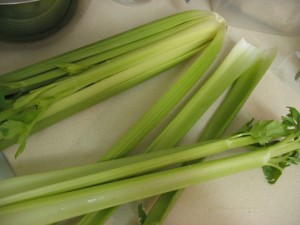
Choose celery from the inner core of the bunch; the two laying crosswise on top are representative.
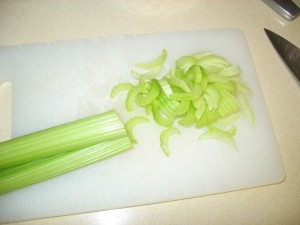 Trim off the raggedy ends and cut the rest of the stalk thinly, yielding moon-shaped slices; add to the bowl.
Trim off the raggedy ends and cut the rest of the stalk thinly, yielding moon-shaped slices; add to the bowl.
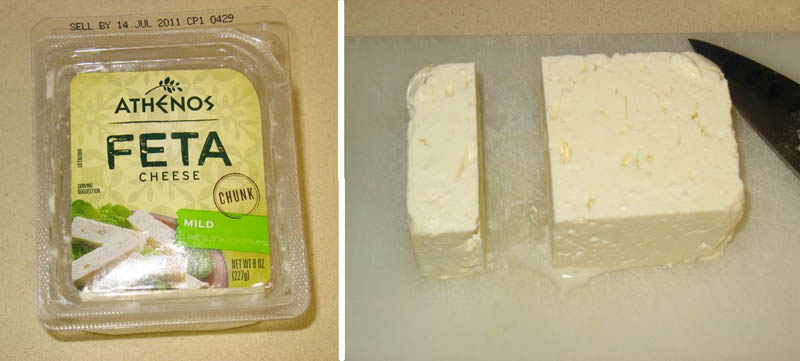
Feta cheese is sold in blocks like this: choose MILD. Cut off what you need.
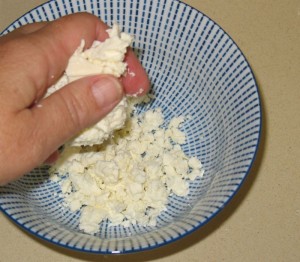
Crumble the cheese, then add to large mixing bowl.
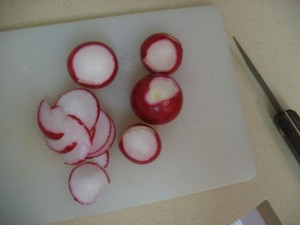
One fun thing about this salad is the amount of crunchy vegetables. Here’s one more: radishes. We serve this salad all through the summer! Add these to the large mixing bowl, then toss all ingredients together lightly.
For Dressing:
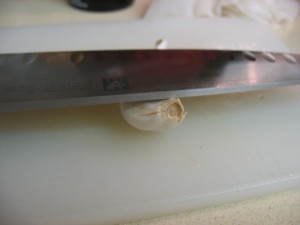
Smash a garlic clove under your knife to loosen the papery skin; peel off and discard. You can either mince the clove finely (finer than the jalapeno), or do what I do:
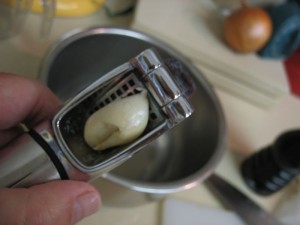
Put it in a garlic press and press it into the bowl.
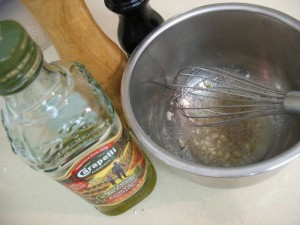
Whisk together the dressing ingredients. Please use bonafide, good quality olive oil. See Tip #3 above. Toss with the salad. Serve.
Advance preparation: The quinoa freezes well and the assembled salad will keep for a day in the refrigerator. It’s fine to make the whole salad a day ahead and then bring it Saturday morning. It still tastes fresh. Please use these proportions; we’ll add more dressing if we need to, but we don’t want soggy salads.
Thanks so much!!
Recipe yield: 45 one-half cup servings. Yes, we are counting every serving. We currently have 285 servings coming, so I’ll be making up a batch myself to bring it up to the 300 servings that we need for that day.
If you want to make this for your family, the amounts for a single batch can be found if you click **here**.
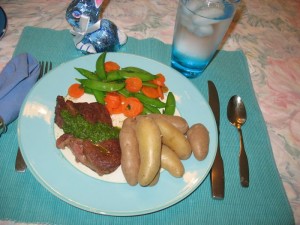 I had two Easters this year. One was quiet by choice: a day of reflection and quiet, without family or friends (my husband was traveling). I ate a simple meal of Asparagus Belgique and spent it recharging my batteries. But the other Easter happened the day after the holiday, when my husband was home and we had our celebratory meal, complete with chocolate bunnies for dessert.
I had two Easters this year. One was quiet by choice: a day of reflection and quiet, without family or friends (my husband was traveling). I ate a simple meal of Asparagus Belgique and spent it recharging my batteries. But the other Easter happened the day after the holiday, when my husband was home and we had our celebratory meal, complete with chocolate bunnies for dessert.